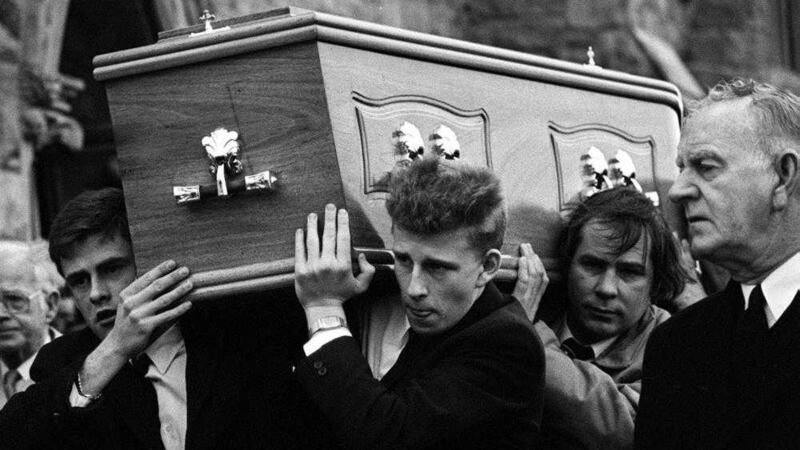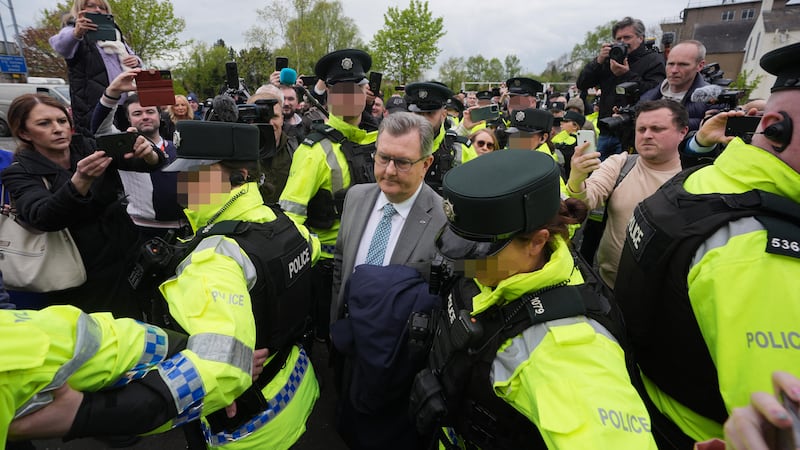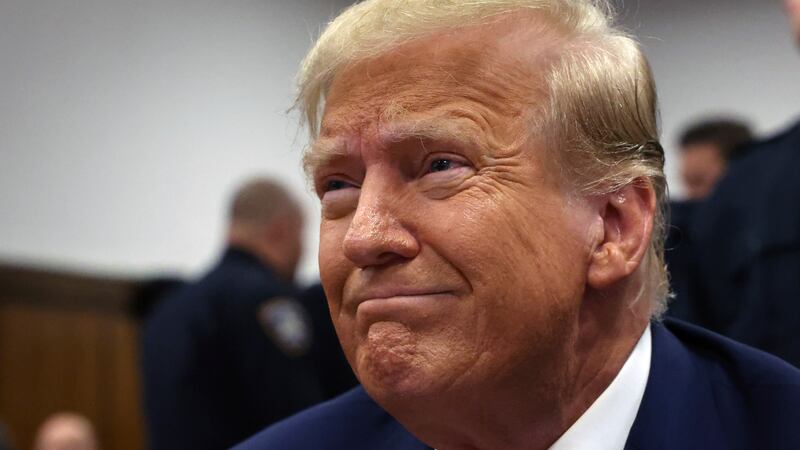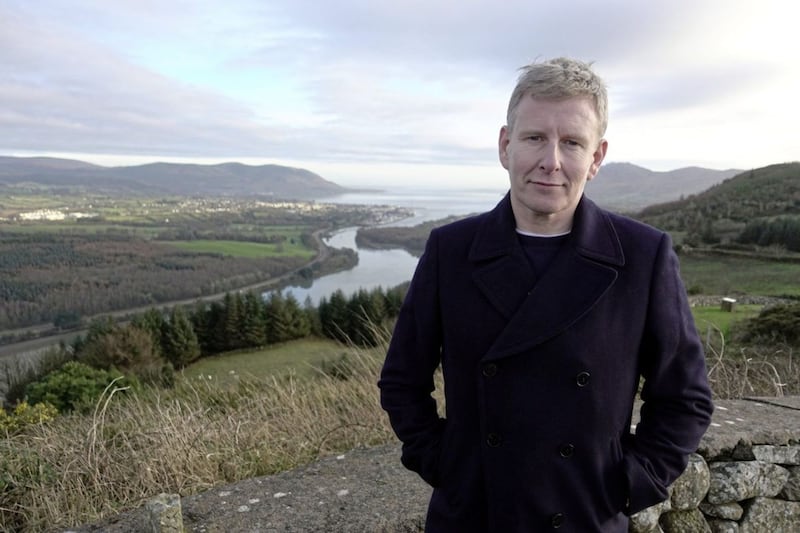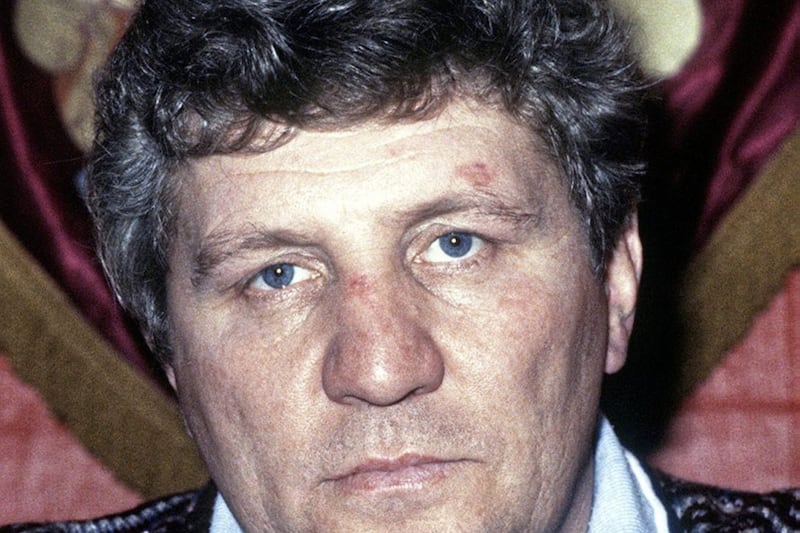A SUSPECT in the sectarian murder of comedian Paddy Kielty's father continued to serve in the UDR after he had been questioned by police about the brutal killing.
Jack Kielty was shot dead by a loyalist hit squad as he sat in his office in Dundrum in Co Down in January 1988.
While in the past the UDA was linked to the murder of the father-of-three, people with links to the UVF in south Down played a central role.
It has now emerged that a UDR man suspected of involvement in the killing continued to serve in the British army after a RUC investigating officer requested that he be thrown out.
Although he was eventually discharged it has emerged the man continued to attend RUC/UDR briefings despite being questioned by police in connection with the murder of Mr Kielty.
The report also reveals that a man, refereed to as Person L but believed to be former UDR member Delbert Watson who was subsequently convicted of murdering Mr Kielty, claimed during police questioning that Person A swore him into the UVF.
Mr Kielty's son Patrick is best known as a comedian and has hosted numerous TV programmes on both sides of the Irish Sea.
Details of the case are contained in a damning Police Ombudsman report into the UVF murder of six Catholic men at Loughanisland in Co Down in June 1994.
He reveals that a man arrested in connection with attack told police that two other men with links to the UDA were driven from Belfast to a safe house in Clough.
They were then taken to Dundrum where they murdered Mr Kielty.
After being identified by the man, who admitted driving the car used during the murders, they were arrested and questioned.
However, because the case relied on the evidence of their co-accused “they were not prosecuted”.
In his report Dr Michael Maguire reveals that that another man known only as Person A, a serving UDR member, was also arrested by police investigating the murder.
This followed a search of an Orange hall in the village of Clough, near Dundrum, during which a rifle, a sub machine gun, a semi-automatic pistol, a revolver, ammunition, gloves and a boiler suit were found.
Police also uncovered British army maps and a UDR photograph album containing montages of IRA suspects.
Dr Maguire said that the officer in charge of the orange hall search, Officer Three, was "conscious it could be compromised by leaks from within the local security forces" prior to it being carried out.
Fingerprints belonging to Person A were later found to be on the recovered montage.
It is believed Delbert Watson’s prints were also found on the album.
The report said that while the Person A was able to explain why his prints were on the album Officer Three made "representations" that he should be discharged from the UDR "citing his alleged use of material originating from the regiment to assist his terrorist activity".
However, the report confirms it was a "considerable number of months" before the suspect was discharged from the UDR "and during the intervening time he continued to attend RUC/UDR briefings",
In a 1988 police report written by Officer Three, Person A is described as a "main organiser, planner and probably responsible for others now made amenable."
"It is suspected that Person A is still an active loyalist terrorist," he said.
The officer said it became apparent at the time that Person A was the driver during an earlier attempt to murder another man, John O'Rourke, at Dundrum in January 1986.
He was also arrested by police investigating the Loughinisland murders in August 1994 after arms were found in a holdall near Saintfield in Co Down.
The VZ-58 automatic riffle used at Loughinisland was also found close by.
Person A’s home was also searched by police weeks earlier.
Although interview records are no longer available, the ombudsman said he denied involvement in the Heights Bar attack and after hair and DNA samples were taken he was released from custody.
In 1999 he was arrested for a second time along with another man, Person B, and later released.
The same year DNA testing produced “limited support” that the DNA of either Person A or Person B or a person maternally related to them was present in the holdall recovered near Saintfield in August 1994.
Person A was later identified in an anonymous message on the police confidential telephone line as one of the gunmen at Loughinisland.
Three men, ex Royal Marine William Bell, David Curlett and Delbert Watson were sentenced to life for the murder of Mr Kielty but were freed in 2000 under the terms of the Good Friday Agreement.
Delbert Watson admitted knowledge of the murder plan and admitted receiving and hiding the weapons after the killing.
His brother Charles Watson, an active loyalist and former UDR member and prison officer, was shot dead by the IRA at his home in Clough in May 1987.
Charles Watson's wife Doreen Watson was also charged in connection with the Kielty murder.
Later convicted of manslaughter, she was set free with a five-year recorded sentence.
It emerged at the time that she allowed the gunmen, who had earlier been transported form Belfast, to use her house prior to and after the murder.
She also admitted driving the two gunmen back to Belfast after the shooting.
The Ombudman report investigated the murders of Adrian Roagan (34), Malcolm Jenkinson (53), Barney Green (87), Daniel McCreanor (59), Patrick O'Hare (35) and 39-year-old Eamon Byrne who all died when the UVF burst into the Height's Bar and sprayed them with automatic gunfire as they watched Ireland playing in the 1994 world cup.
Police Ombudsman Dr Michael Maguire has said he believes there was collusion in the murders.
He also examined several other killings linked to the UVF in south Down and one in north Belfast, including that of Jack Kielty.
Solicitor Niall Murphy, who represents the Loughinisland families, said Police Officer Three was "a good apple in a rotten orchard".
"The report finds that the security forces had been compromised principally from the UDR but also from within the local RUC, through either direct involvement with loyalist paramilitaries, associations or sympathies,
He added that "at least three individuals and their families directly associated with the UVF unit in south Down were members of the UDR and also had close family members working locally at RUC establishments and within the police force itself."
